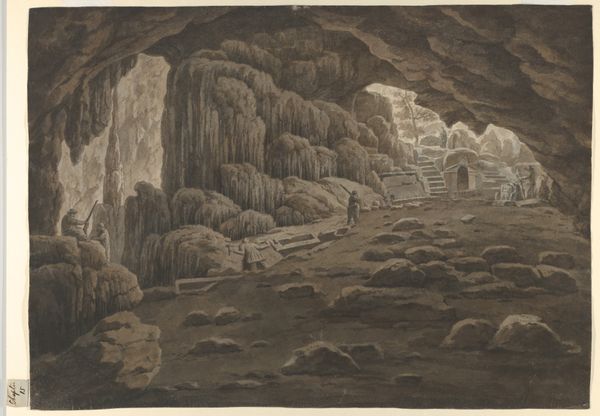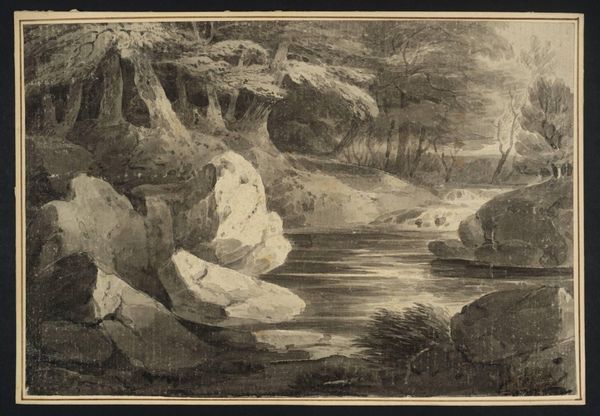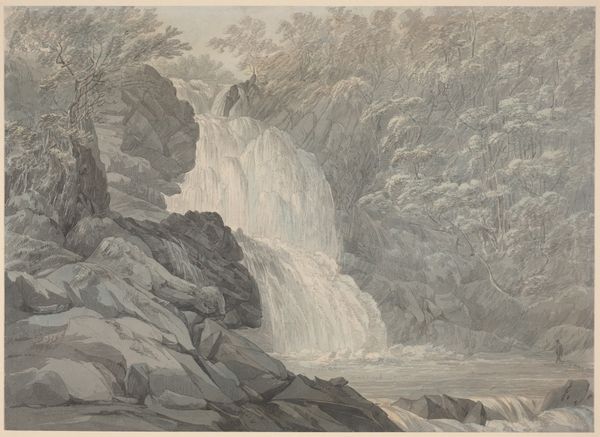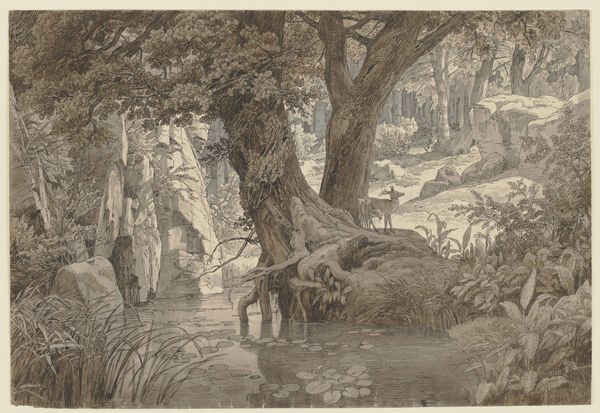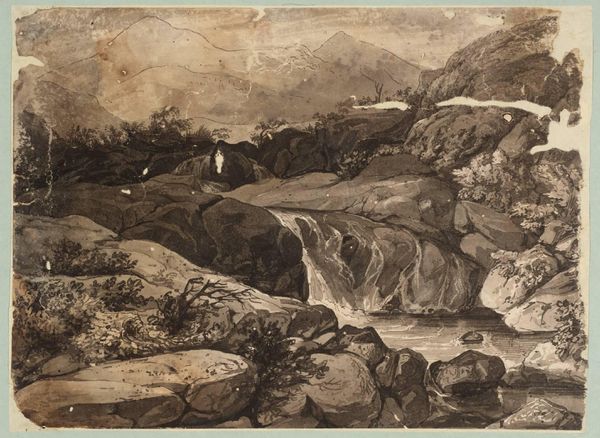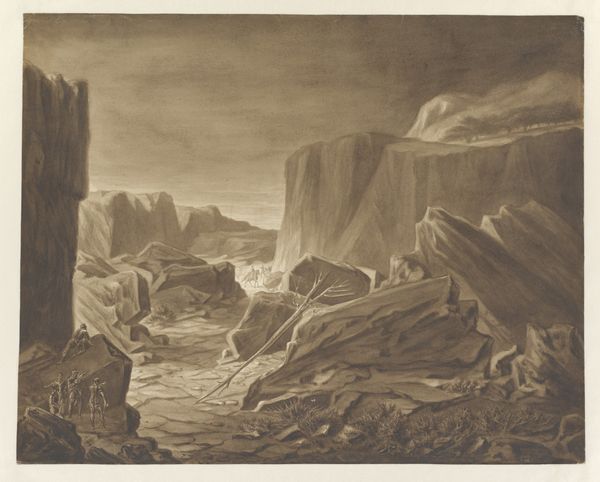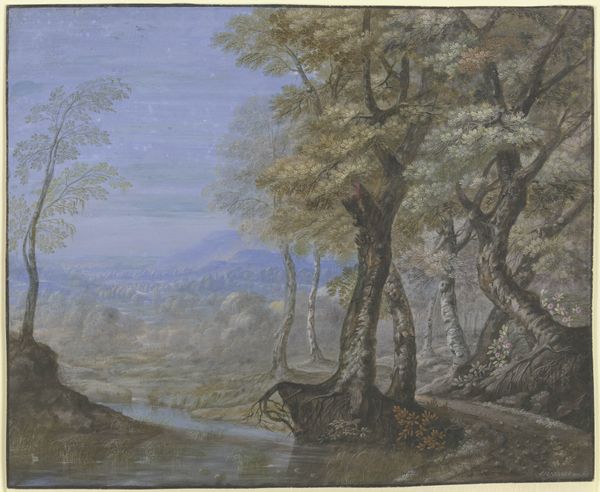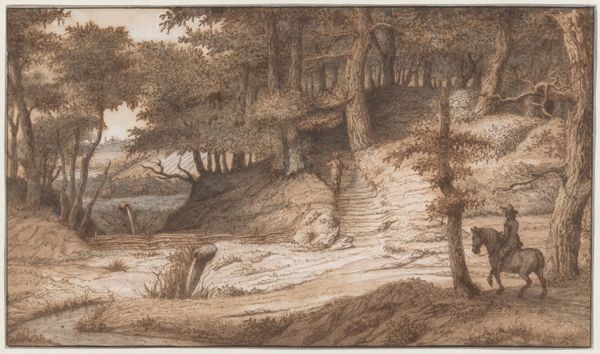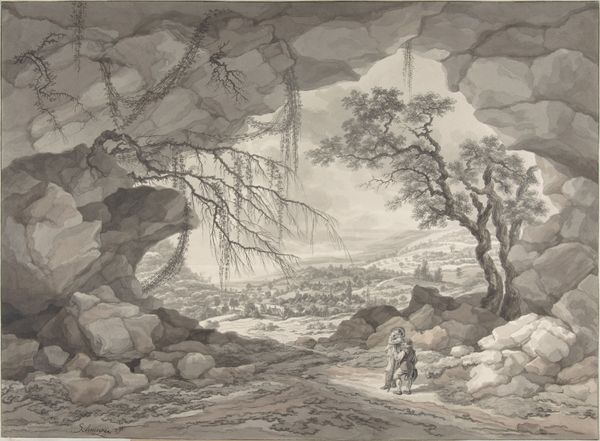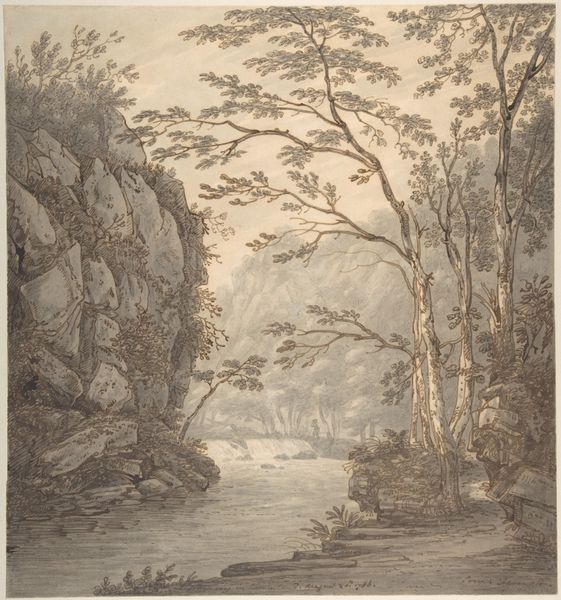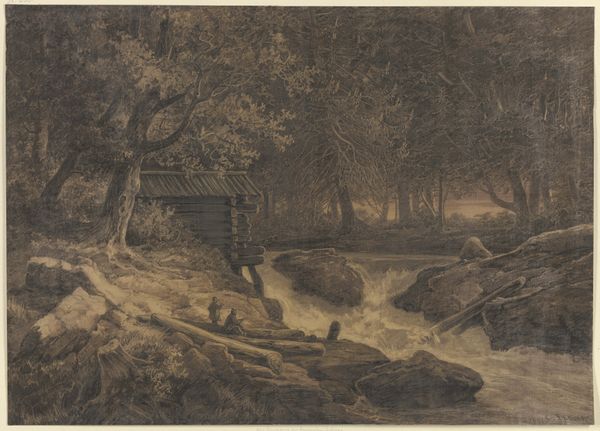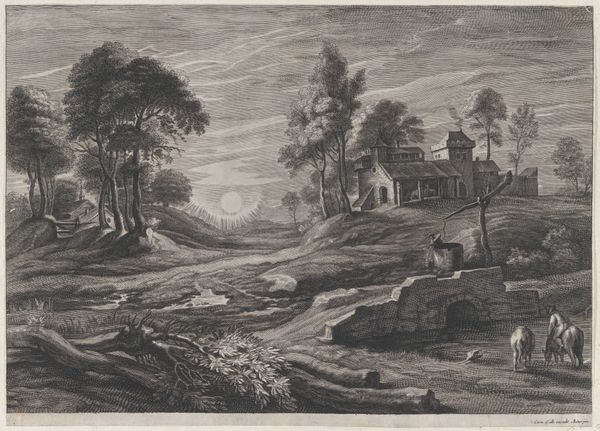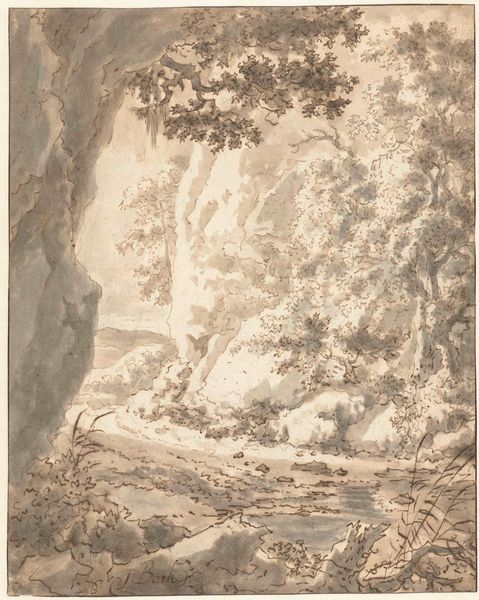
drawing, coloured-pencil, gouache, watercolor
drawing
coloured-pencil
baroque
gouache
landscape
watercolor
coloured pencil
watercolor
Copyright: Public Domain
Curator: Here we have "Mountain Landscape with Castles," a drawing attributed to Johann Nikolaus Gassner. It's a striking piece, rendered in watercolor, gouache, and coloured pencil. What's your immediate take? Editor: My first thought is twilight, or maybe even just before a storm. The mood is intensely dramatic, a tad romantic. There’s a lot of grey and charcoal...a palpable gloom, but a delicate gloom if that makes sense. It's like a stage set for a gothic fairy tale. Curator: Absolutely! Gassner masterfully layers light and shadow to create that very effect. Notice how the ruins aren’t just architectural features, but emotional anchors. Castles, or ruins of castles, frequently represent nostalgia or perhaps a poignant sense of decline. Here it might be seen as representing both spiritual aspiration and human impermanence. Editor: Interesting. Those ruined structures against the wild landscape – there’s definitely a feeling of transience, the fragility of human ambition contrasted with nature’s enduring power. Waterfalls often stand as representations of life's journey. Do you feel like they symbolize something particular here, maybe the relentless march of time eroding even the grandest human achievements? Curator: That’s a perceptive insight. Water can symbolize cleansing, transformation, the cyclical nature of life itself. These falls seem particularly apt in front of such decay. And observe the choice of colors – these grey tones would absolutely evoke specific, culturally-rooted sensations of solemnity or pensiveness for viewers of Gassner's time. Editor: You can see how, in that era, a picture like this would inspire deep, maybe even unsettling contemplation. There's a tension that persists across centuries; the eternal, unknowable force of nature against our attempts to shape and dominate the world around us. I love that paradox. Curator: Yes, precisely. The dialogue between these themes and the use of the mediums create that powerful narrative. Editor: Seeing this, it all feels somehow beautifully tragic... almost soothing. A good reminder that we are all, in the end, part of a bigger landscape, both literally and figuratively. Curator: Exactly. The mountain yields to the structures, and they, in turn, return to the landscape. What more can we learn about the meaning of life in the image before us?
Comments
No comments
Be the first to comment and join the conversation on the ultimate creative platform.
